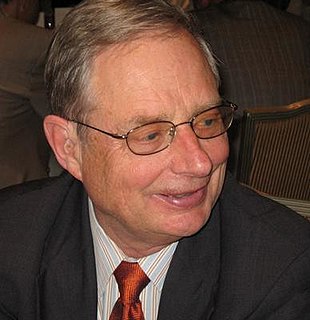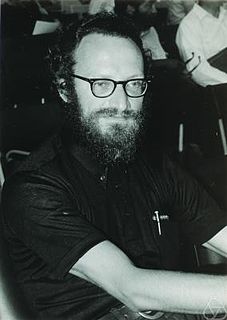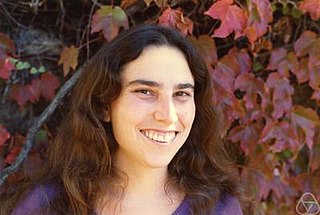Related Research Articles

John Willard Milnor is an American mathematician known for his work in differential topology, algebraic K-theory and low-dimensional holomorphic dynamical systems. Milnor is a distinguished professor at Stony Brook University and one of the five mathematicians to have won the Fields Medal, the Wolf Prize, and the Abel Prize

Vladimir Alexandrovich Voevodsky was a Russian-American mathematician. His work in developing a homotopy theory for algebraic varieties and formulating motivic cohomology led to the award of a Fields Medal in 2002. He is also known for the proof of the Milnor conjecture and motivic Bloch–Kato conjectures and for the univalent foundations of mathematics and homotopy type theory.

John Henry Constantine Whitehead FRS, known as Henry, was a British mathematician and was one of the founders of homotopy theory. He was born in Chennai, in India, and died in Princeton, New Jersey, in 1960.

Shou-Wu Zhang is a Chinese-American mathematician known for his work in number theory and arithmetic geometry. He is currently a Professor of Mathematics at Princeton University.

Phillip Augustus Griffiths IV is an American mathematician, known for his work in the field of geometry, and in particular for the complex manifold approach to algebraic geometry. He was a major developer in particular of the theory of variation of Hodge structure in Hodge theory and moduli theory. He also worked on partial differential equations, coauthored with Shiing-Shen Chern, Robert Bryant and Robert Gardner on Exterior Differential Systems.
David Gabai is an American mathematician and the Hughes-Rogers Professor of Mathematics at Princeton University. Focused on low-dimensional topology and hyperbolic geometry, he is a leading researcher in those subjects.

William Browder is an American mathematician, specializing in algebraic topology, differential topology and differential geometry. Browder was one of the pioneers with Sergei Novikov, Dennis Sullivan and C. T. C. Wall of the surgery theory method for classifying high-dimensional manifolds. He served as President of the American Mathematical Society until 1990.
David Alexander Vogan, Jr. is a mathematician at the Massachusetts Institute of Technology who works on unitary representations of simple Lie groups.
John Coleman Moore was an American mathematician. The Borel−Moore homology and Eilenberg–Moore spectral sequence are named after him.

Michael Jerome Hopkins is an American mathematician known for work in algebraic topology.

Jacob Alexander Lurie is an American mathematician who is a professor at the Institute for Advanced Study. Lurie is a 2014 MacArthur Fellow.
Gordon Thomas Whyburn was an American mathematician who worked on topology.

James Dillon Stasheff is an American mathematician, a professor emeritus of mathematics at the University of North Carolina at Chapel Hill. He works in algebraic topology and algebra as well as their applications to physics.
Karen Hunger Parshall is an American historian of mathematics. She is the Commonwealth Professor of History and Mathematics at the University of Virginia with a joint appointment in the Corcoran Department of History and Department of Mathematics. From 2009 to 2012, Parshall was the Associate Dean for the Social Sciences in the College of Arts in Sciences at UVA, and from 2016 to 2019 she was the chair of the Corcoran Department of History.

Eric Mark Friedlander is an American mathematician who is working in algebraic topology, algebraic geometry, algebraic K-theory and representation theory.

Ruth Michele Charney is an American mathematician known for her work in geometric group theory and Artin groups. Other areas of research include K-theory and algebraic topology. She holds the Theodore and Evelyn G. Berenson Chair in Mathematics at Brandeis University. She was in the first group of mathematicians named Fellows of the American Mathematical Society. She served as president of the Association for Women in Mathematics during 2013–2015, and has been elected to serve as president of the American Mathematical Society for the 2021–2023 term.

Ralph Louis Cohen is an American mathematician, specializing in algebraic topology and differential topology.

Emily Riehl is an American mathematician who has contributed to higher category theory and homotopy theory. Much of her work, including her PhD thesis, concerns model structures and more recently the foundations of infinity-categories. She is the author of two textbooks and serves on the editorial boards of three journals.
William Schieffelin Claytor was an American mathematician specializing in topology. He was born in Norfolk, Virginia, where his father was a dentist. He was the third African-American to get a Ph.D. in mathematics, and the first to publish in a mathematical research journal.
Frederick Ronald Cohen was an American mathematician working in algebraic topology.
References
- ↑ "Neisendorfer Homepage". University of Rochester . Retrieved 2018-05-17.
- ↑ "List of Fellows of the American Mathematical Society". American Mathematical Society. Retrieved 2018-05-17.
- ↑ Joseph Neisendorfer at the Mathematics Genealogy Project
- ↑ Kelly, Morgan (2016-04-08). "John C. Moore, dedicated and influential Princeton mathematician, dies". Princeton University. Retrieved 2018-05-17.
- ↑ "Rochester Renaissance Plan for The College". University of Rochester. 1995-11-16. Retrieved 2018-05-17.
- ↑ Arenson, Karen W. (1996-02-04). "Fears That Loss of a Math Ph.D. Program Figures in a Bigger Equation". The New York Times . Retrieved 2018-05-17.
- ↑ Jackson, Allyn (1996). "Downsizing at Rochester: Mathematics Ph.D. Program Cut" (PDF). Notices of the AMS . 43 (3): 300–306.
- ↑ "Rochester Enhancing Math Programs". University of Rochester. 1996-03-28. Retrieved 2018-05-17.
- ↑ Jaffe, Arthur (1996-03-28). "Flash Update from the Rochester Task Force of the AMS". American Mathematical Society. Retrieved 2018-05-17.
- ↑ Neisendorfer, Joseph (2008-04-10). "Letter from Joseph Neisendorfer". What's New . Retrieved 2018-05-17.